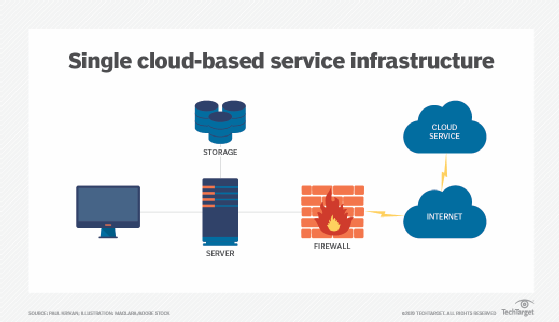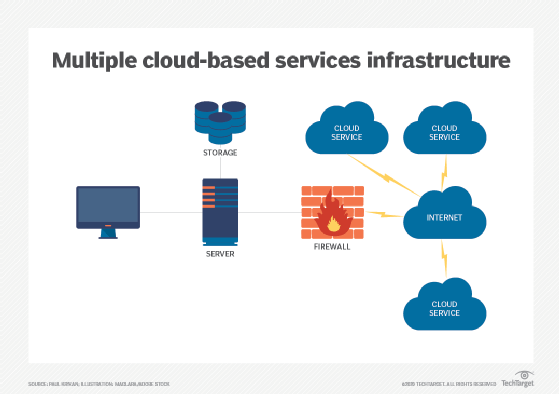
WavebreakMediaMicro - Fotolia
How can organizations create agility in cloud computing?
Cloud computing technology has proven to be a useful tool for organizations in the digital age, and now CIOs can use it to increase business agility. Here's how.
Given the steady increase of the use of cloud technologies in the enterprise, it's logical to expect that additional ways to leverage these resources will be developed. And considering the need for business agility from IT leaders to address new and challenging opportunities, it begs the question: How can CIOs create agility in cloud computing technology?
Here, we examine how cloud computing technologies -- particularly the many different "as-a-service" offerings such as SaaS, PaaS and IaaS -- can be used to increase productivity and improve access to business resources, and in turn, enhance business agility. This is especially important when developing new products and services, increasing innovation, improving customer service and maintaining compliance.
Agility takes many forms in today's business world. Organizations in highly competitive and fast-moving industries constantly need to innovate and identify ways to boost productivity, quickly bring new products to market and enhance their ability to maintain long-term viability and success. In several of these industries old, familiar methods are no longer the norm, which could ultimately cause short- and long-term harm to the organization.
Cloud computing technology steadily grows in acceptance and deployment by many vertical markets and continues to prove beneficial to the enterprise. Let's take a look at whether organizations can increase agility in cloud computing.
Figure 1 depicts a more-or-less typical technology configuration in which local storage systems carry the burden of application support, with only one cloud-based service in use.

Does this configuration have sufficient resources to create an agile environment? At first glance, the quantity of data storage suggests enough storage is available to support multiple applications that could generate agility collectively. As we don't have the technical specifications of the various devices, we can only guess at what is possible. The use of a cloud service suggests the organization employs some sort of managed service for a specialized application, such as a financial suite or CRM system.
That alone doesn't necessarily mean a state of agility has been achieved. In addition, the method for data backup and recovery needs to be considered -- is it solely implemented in local storage or is it a combination of local and cloud storage?
By contrast, let's examine a somewhat more cloud-focused environment, where an organization utilizes resources from multiple cloud-based resources. Figure 2 depicts a configuration with somewhat less local storage and a greater use of cloud-based resources.

While this kind of configuration isn't considered the norm today, it is certainly a noteworthy trend. We can see an increased dependence on cloud-based resources, including the "as-a-service" resources, as well as cloud-based, mission-critical applications.
As such, one of the configuration's key concerns becomes availability of enough network bandwidth to support data throughput for all data transactions. And if cloud technology also provides backup and recovery support for applications, VMs and mission-critical databases and customer data, the need for bandwidth is critical. Security also becomes a greater concern as resources no longer occupy the safe confines of a data center.
How is agility in cloud computing achieved?
In each of the two infrastructure configurations depicted, enough processing power and network bandwidth can be available to provide agility, assuming we know the organization's requirements. How do we then measure and determine whether the increased use of cloud computing technology can, in fact, increase business agility?
First, IT must determine each user department's requirements for accessing resources, their expectations for response times to user inquiries and processing speed of the resources. Next, application performance tests must be conducted to determine the overall speed and availability of critical resources.
But that's not all -- the elephant in the room is how to determine if the current Figure 1 infrastructure can be improved upon by the Figure 2 infrastructure. What organization is going to make an investment in Figure 2 to determine if applications are booting up and responding more quickly? Such an investment won't be made without substantial planning and investigation.
What you can do is regularly monitor the performance of servers, applications and network bandwidth and make incremental adjustments to achieve the best overall performance possible. These "adjustments" can include more powerful servers, as well as increased memory and local and wide area network bandwidth. A few examples are to upgrade from 10/100 MB Ethernet to gigabit Ethernet, increase internet access speeds from 500 MBps to 10 GBps and investigate the availability of updated (i.e., faster) versions of critical applications.
Being proactive is vital
The above activities should be regularly performed regardless of an organization's current infrastructure configuration. This will ensure that users can access critical resources at an optimal level of performance.
Having multiple cloud resources isn't an ironclad guarantee of greater access speed, but proactive IT operations management combined with the knowledge of user requirements and expectations makes the most sense when creating agility in cloud computing.







